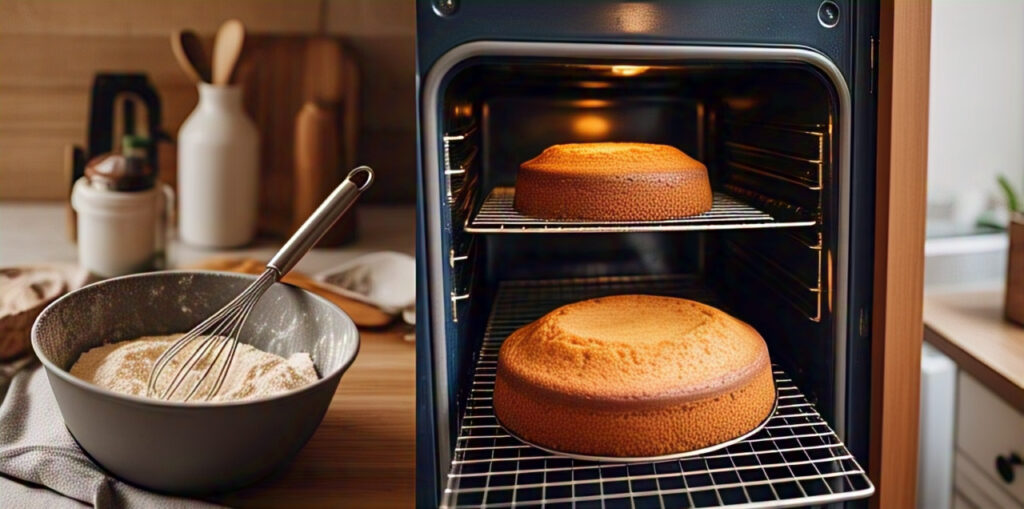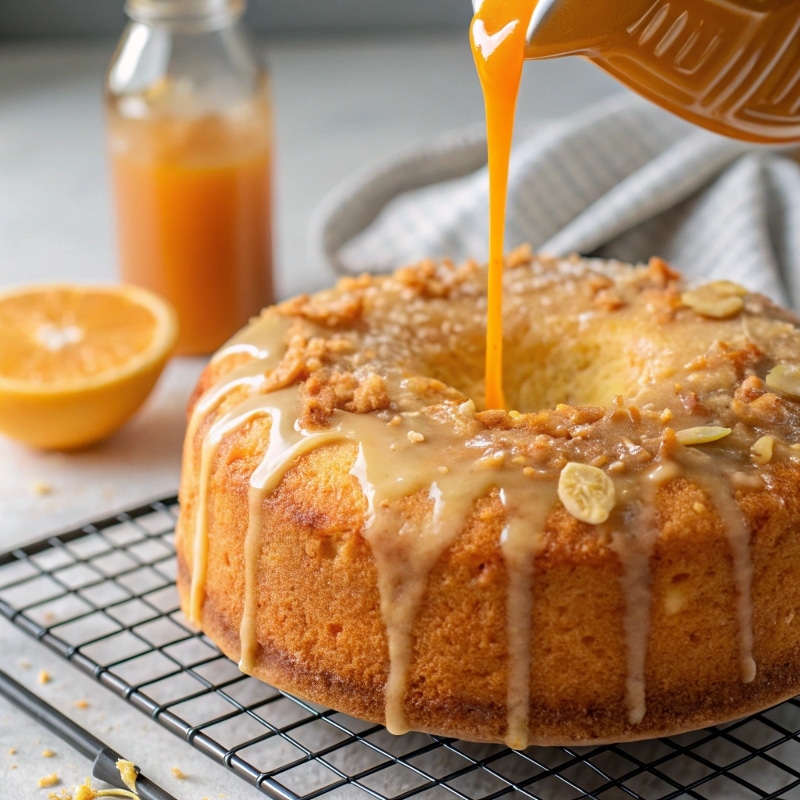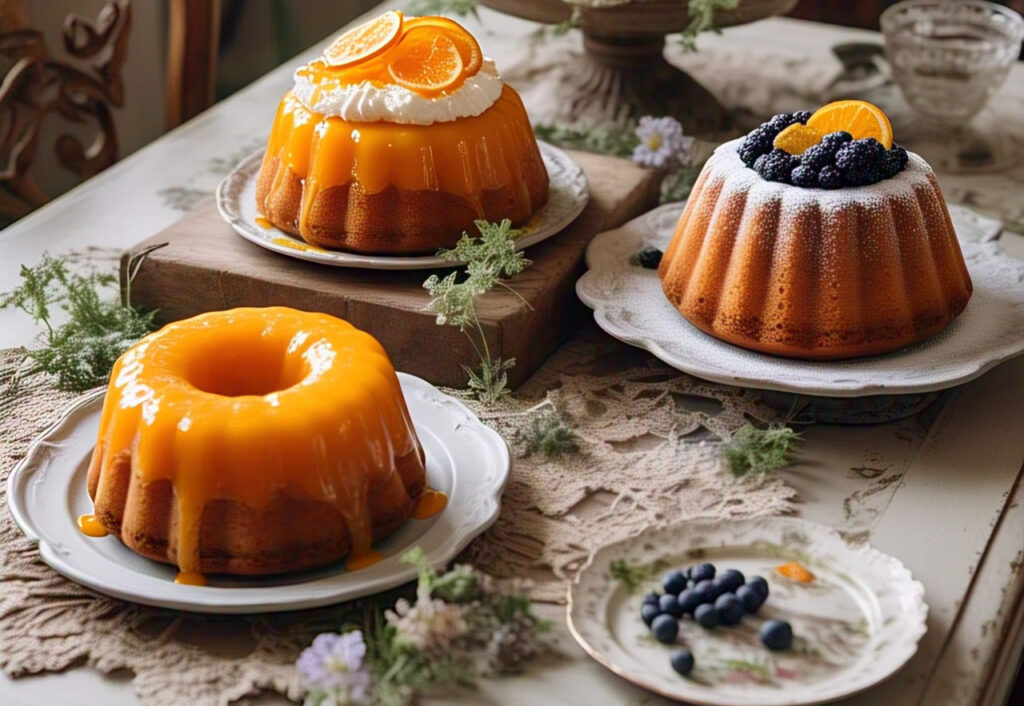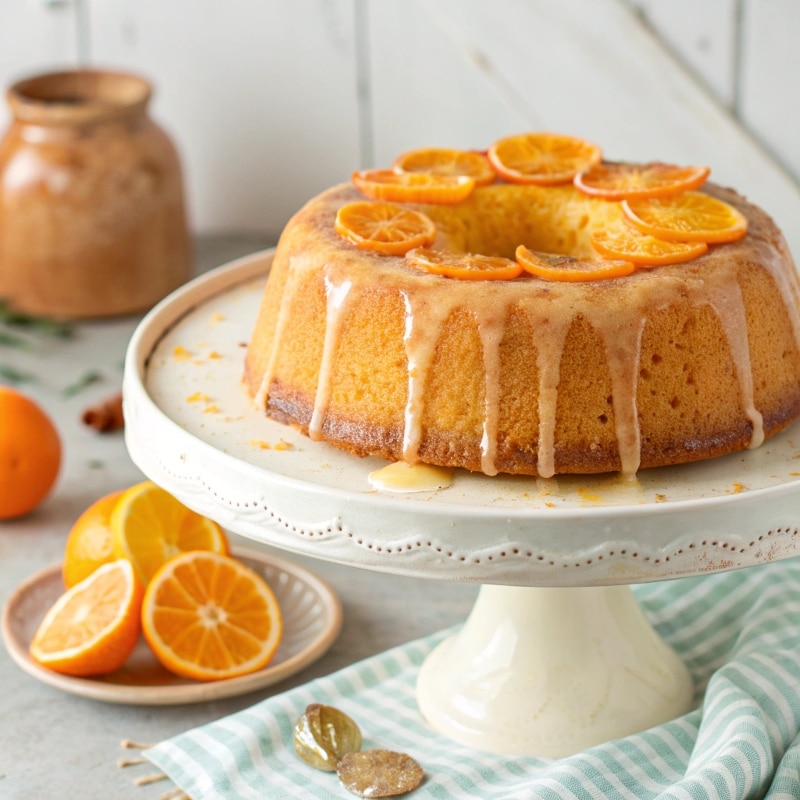Orange Juice Cake is a delicious, moist, citrusy treat that’s simple to make and absolutely irresistible. Whether you’re baking it for brunch, a potluck, or just because, this Southern classic brings bright orange flavor into every bite. Made with pantry staples and a zesty glaze, it’s perfect for home bakers looking for a foolproof cake.
Don’t miss our Best 6 Strawberry Cheesecake for another fruity dessert idea.
Let’s dive into everything you need to know about making the perfect orange juice cake, from ingredients and step-by-step instructions to storage tips, FAQs, and tasty variations.
Table of Contents
Print Recipe
Orange Juice Cake
Equipment
- Loaf pan (9×5 in) or 8‑inch round pan
- Mixing bowls
- Electric mixer or whisk
- Zester/grater
- Measuring cups & spoons
Ingredients
Cake Batter
- 2 cups all‑purpose flour sifted
- 1½ tsp baking powder
- ½ tsp salt
- 1 cup granulated sugar
- 2 eggs room temperature
- ½ cup vegetable oil
- ¾ cup fresh orange juice about 2‑3 oranges
- 1 tbsp orange zest
- 1 tsp vanilla extract
Orange Glaze (optional)
- 1 cup powdered sugar powdered sugar
- 2–3 tbsp fresh orange juice adjust for thickness
- 1 tsp orange zest optional garnish
Instructions
- Preheat oven to 350 °F (175 °C). Grease and flour a 9×5‑inch loaf pan or 8″ round pan.
- In a bowl, whisk together flour, baking powder, and salt.
- In another bowl, beat sugar, eggs, oil, orange juice, zest, and vanilla until combined and slightly fluffy.
- Gradually fold dry ingredients into wet until just combined—do not overmix.
- Pour batter into pan and bake 30–35 minutes, until a toothpick inserted comes out clean.
- Cool in pan 10 minutes, then transfer to a rack to cool completely.
- For glaze, whisk powdered sugar with orange juice until smooth. Drizzle over cooled cake and scatter zest if desired.
- Slice and serve. Store loosely covered at room temperature for 2 days or refrigerate up to 5 days.
Notes
Introduction to Orange Juice Cake
What Is Orange Juice Cake?
Orange Juice Cake is a moist yellow cake infused with real orange juice and topped with a sugary citrus glaze. It’s a quick recipe that often uses a cake mix and pudding base to guarantee fluffiness and structure. Originating in the South, it’s known for its balance of sweetness and tang. The citrus kick makes it ideal for warm-weather gatherings or holiday spreads.
Why Orange Juice Makes Cakes Taste So Good
Orange juice adds more than just flavor, it boosts the moisture and acidity of the batter. The natural sugars in the juice also caramelize slightly during baking, enhancing the overall taste. Plus, the tartness of orange balances the sweetness of the cake mix, keeping each bite light and fresh.
Oranges not only add flavor but also nutritional benefits. Read more about orange nutrition facts Orange Nutrition Facts.
Ingredients for a Perfect Orange Juice Cake
Main Ingredients You’ll Need
Here’s everything you’ll need for the cake:
| Ingredient | Quantity | Notes |
|---|---|---|
| Yellow Cake Mix | 1 box (15.25 oz) | Use your favorite brand |
| Instant Vanilla Pudding Mix | 1 box (3.4 oz) | Adds creaminess and structure |
| Large Eggs | 4 | Room temperature |
| Vegetable Oil | ¾ cup | Adds moisture |
| Orange Juice | 1 cup | Fresh or bottled, not from concentrate |
| Orange Zest (optional) | 1 tbsp | Adds extra flavor punch |
Optional Add-ins for Flavor & Texture
- ½ tsp orange extract for stronger flavor
- ½ cup mini white chocolate chips for sweetness
- ½ cup chopped walnuts or pecans for crunch

Step-by-Step Instructions for Orange Juice Cake
Mixing the Batter the Right Way
Start by preheating your oven to 350°F (175°C). Grease and flour a 10-inch Bundt pan (or use a nonstick spray). In a large bowl, combine the cake mix and pudding mix. Add eggs, oil, and orange juice. Mix on medium speed for 2–3 minutes until smooth. If using zest or extract, add them now.
Baking and Cooling Tips
Pour the batter into the prepared pan. Bake for 40–45 minutes, or until a toothpick inserted comes out clean. Let the cake cool in the pan for 10–15 minutes before flipping onto a wire rack or plate. Don’t cool it completely before adding glaze warm cake absorbs glaze better!

How to Make the Best Orange Glaze
Glaze Ingredients You’ll Need
| Ingredient | Quantity |
|---|---|
| Powdered Sugar | 1 cup |
| Orange Juice | ¼ cup |
| Vanilla Extract | 1 tsp |
Applying the Glaze While Cake Is Warm
Whisk the ingredients until smooth and lump-free. Pour the glaze over the warm cake slowly. It should seep into the top and sides. You can drizzle a little extra once the first layer sets for a glossy finish.

A Little Backstory From My Kitchen
The first time I made this orange juice cake was on a random Tuesday. I had a boxed cake mix, a few oranges on the counter, and exactly zero desire to make anything complicated. My kids devoured it in record time, and my neighbor asked for the recipe after just one bite.
It’s become my go-to when I need something cheerful and comforting. (And let’s be honest—when do we not need that?)
Tips for Moist Orange Juice Cake
Avoiding Dry Cake: What You Need to Know
Use room temperature ingredients to ensure smooth mixing. Don’t overbake the cake is done when the edges pull slightly from the pan and the top springs back when lightly touched. Using pudding mix and oil keeps it moist for days.
Citrus Boosts: Using Zest and Extracts
For extra punch, add orange zest into the batter or glaze. A drop or two of orange extract also intensifies the flavor without making it sour.
Orange Juice Cake Variations You’ll Love
Make It Vegan or Dairy-Free
Substitute eggs with flax eggs and use a plant-based pudding mix. Replace dairy-based cake mix with a vegan-friendly version and use orange juice as the only liquid.
Use Different Citrus Juices
Try lemon juice for a tangy twist or grapefruit juice for a more complex, grown-up flavor. Each gives a unique spin on this base recipe.
Serving and Storing Orange Juice Cake
How to Store for Freshness
Wrap the cooled cake in plastic wrap or store in an airtight container. It lasts 3–4 days at room temp or up to a week in the fridge. Want to save it longer? Freeze it without glaze for up to 2 months.
What to Serve With Orange Juice Cake
Pair with coffee, black tea, or citrus cocktails. For brunch, serve with fresh berries, whipped cream, or even Greek yogurt.

Frequently Asked Questions
What’s the difference between an orange cake and an orange juice cake?
Great question! An orange cake often uses zest or extract, but this orange juice cake gets its flavor and moisture from real juice plus that warm syrupy glaze makes all the difference.
Can I use a different cake mix?
Absolutely! White or even lemon cake mix works great. Just avoid chocolate (unless you’re into bold combos then go for it!).
Is this a good cake for brunch?
Yes, yes, and yes. It’s light enough for morning gatherings but rich enough to feel special. Pair it with coffee or mimosas and you’re golden.
Is orange juice cake better with glaze or frosting?
The glaze keeps it light and moist. Frosting adds richness but may overpower the orange flavor.
Final Thoughts and Inspiration
This Orange Juice Cake is foolproof, flavorful, and full of sunshine. Whether you’re new to baking or a seasoned pro, it’s a crowd-pleaser you’ll make again and again.
More Sweet Citrus Recipes You’ll Love
Lemon and White Chocolate Cookies another bright and citrusy favorite
Looking for something even richer? Try our Orange Creamsicle Cake


